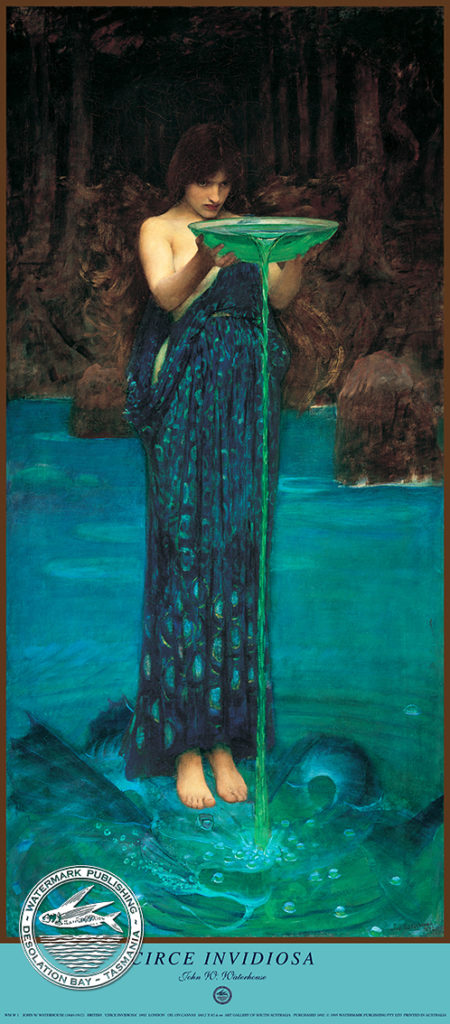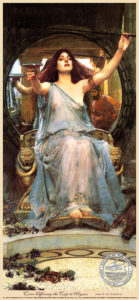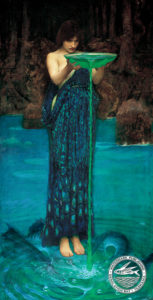Description
The painting “Circe Invidiosa” (1892)
Circe Invidiosa was painted in 1892 by John William Waterhouse, a British artist known for his connection to the Pre-Raphaelite movement. He often painted scenes from old myths, legends, and classical literature. He had a special interest in strong and magical women.
This painting shows Circe, a powerful sorceress from Greek mythology. She appears in Homer’s Odyssey and Ovid’s Metamorphoses. In the painting, she is pouring a glowing green poison into the sea. She wants to turn her rival, the beautiful Scylla, into a sea monster because she is jealous. The scene shows the exact moment the spell is cast. Circe’s serious expression adds to the drama. The deep blues and greens give the image a magical and mysterious feeling, showing the danger of both the sea and Circe’s powers. Waterhouse’s famous style—rich colour, fine details, and emotional female figures—is clear in the painting.
Waterhouse often painted strong but tragic women from myths and stories. Some of his most well-known works include The Lady of Shalott (1888) and Hylas and the Nymphs (1896). Like Circe Invidiosa, these artworks deal with themes like love, jealousy, and transformation.
The artist John William Waterhouse (1849-1917)
John William Waterhouse was born in Rome in 1849. His parents were both painters. He later moved to London and studied at the Royal Academy of Arts. At first, he painted classical and historical subjects, but later shifted to romantic and mythological themes. Although his work went out of fashion for a time, it became popular again in the 20th century. Waterhouse died in 1917.





